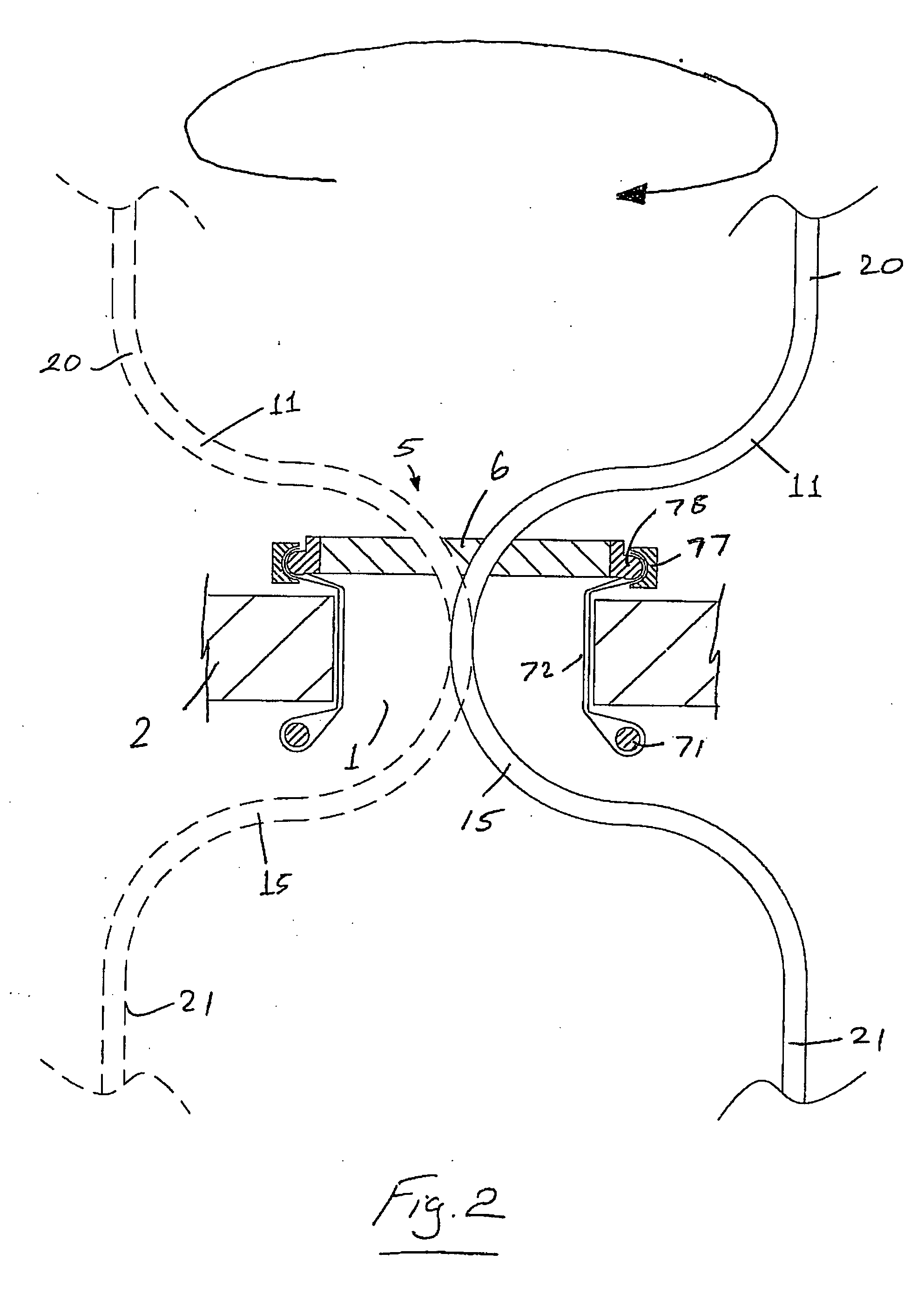Surgical instrument
a surgical instrument and cannula technology, applied in the field of surgical instruments, can solve the problems of therefore the reach and reducing the effective length of the surgical instrumen
- Summary
- Abstract
- Description
- Claims
- Application Information
AI Technical Summary
Benefits of technology
Problems solved by technology
Method used
Image
Examples
Embodiment Construction
[0117] Referring to the drawings there are illustrated various laparoscopic surgical instrument access systems of the invention for an incision 1, for example in an abdominal wall 2. The construction of the various components and their attributes will be explained in detail below.
[0118] The instrument access systems of the invention generally comprise an access port 5 having an access valve or seal 6 for location adjacent to the incision 1. The system also comprises a laparoscopic surgical device comprising a cannula or an instrument 10 having a shaft 11 for location in the valve or seal 6 adjacent to the incision 1. The device of the invention has a bend section 15 therein. The device may be a visualisation tool such as a camera, light, or a laparoscope and / or may have any suitable end effector such as a grasper, scissors, stapler or the like.
[0119] It will be noted that the valve / seal 6 has a very low profile, especially with respect to the inside of the incision 1. The devices ...
PUM
 Login to View More
Login to View More Abstract
Description
Claims
Application Information
 Login to View More
Login to View More - R&D
- Intellectual Property
- Life Sciences
- Materials
- Tech Scout
- Unparalleled Data Quality
- Higher Quality Content
- 60% Fewer Hallucinations
Browse by: Latest US Patents, China's latest patents, Technical Efficacy Thesaurus, Application Domain, Technology Topic, Popular Technical Reports.
© 2025 PatSnap. All rights reserved.Legal|Privacy policy|Modern Slavery Act Transparency Statement|Sitemap|About US| Contact US: help@patsnap.com



